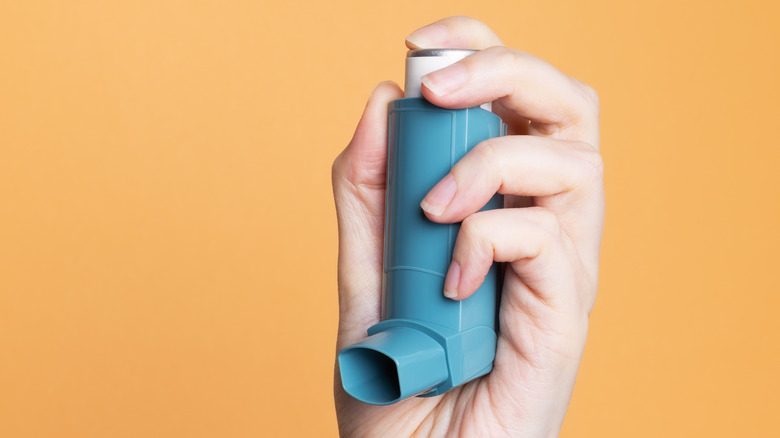How Asthma Inhalers Really Work
Asthma is a serious respiratory disease that interferes with normal breathing by causing irritation and inflammation in the air passage (aka bronchioles) located in the lungs, as the National Heart, Lung, and Blood Institute explains. According to the Centers for Disease Control and Prevention, this illness causes intense coughing, wheezing, and shortness of breath. Needless to say, life can be really difficult if you're unable to breathe normally. That's when inhalers come to the rescue. Some people with asthma refer to these small palm-size devices as complete life-savers!
The Asthma and Allergy Foundation of America (AAFA) reports that more than 20 million people living in the U.S. have asthma. Asthma is also incredibly common in children, and the AAFA reports that over 5 million kids experience it. Being so common, treatment is available. People may use a daily inhaler to manage their asthma in the long term and some may use a fast acting rescue inhaler for immediate relief, according to WebMD.
What an inhaler does and how to use it safely
Inhalers contain medicine known as a bronchodilator. Some of these medicines are meant for quick results while others are better suited for relieving long-term symptoms of asthma. An inhaler's main function is to dilate bronchioles, since asthma tightens the airway muscles leading to and from the lungs. Bronchodilators contain muscle-relaxing medicines that may ease this tightness, allowing better and smoother airflow, and relieving irritation (via WebMD). In addition, inhalers remove mucus from the air passages that could block the airflow. Mucus development is common in cold or dry seasons and makes asthma worse.
According to MedlinePlus, inhalers have an opening at one end and a button on the other that helps push the medicine into the mouth. The mouthpiece is held in such a way that the mouth creates a seal around the opening. It's important to shake your inhaler at least 10 times before every use and ensure there's nothing lodged in the mouthpiece, warns MedlinePlus. The button is then pushed once, while the person simultaneously inhales slowly and deeply. That's how the medication enters the air passage and quickly relieves asthma symptoms.


